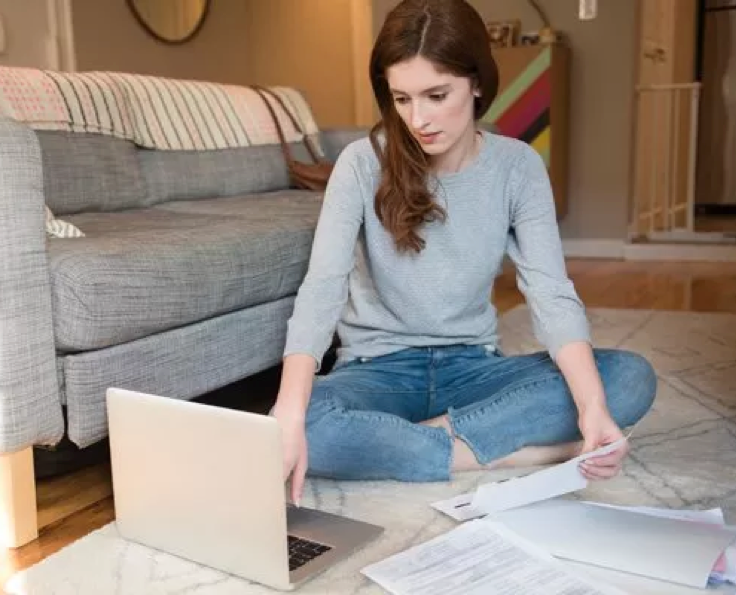Top 10 Tips to Save on Your Electricity Bill
Top 10 Tips to Save on Your Electricity Bill
Compare Electricity & Gas Plans
Save time and effort by comparing a range of energy plans with iSelect
1. Switch off your lights
2. Make the switch to LEDs
3. Keep the temperature just right all year
4. Switch to a cold wash
5. Plan and prep for energy-efficient cooking
6. Recharge devices responsibly
7. Turn your entertainment centre into energy savings
8. Upgrade your appliances for energy efficiency
9. Insulate for long-term savings
10. Go solar
You have the power
Bonus tip: switch Energy Providers
There are simple actions you can put into effect today or this weekend. There are also some things you can do that take a bit more planning and investment but are well worth it in the long run. Here’s 10 energy saving ideas that you can try for yourself, many of which your friendly neighbourhood iSelect writer has road-tested themselves.
1. Switch off your lights
Ever stopped to count the lights in your home? The Australian average is 37.1Your Home – Lighting It’s no wonder then that 10% of the average Australian household electricity bill is just for lights.2energy.gov.au –Lighting Guess it makes sense why my parents nagged me about turning the lights off after I left a room or, at one point, removed the bulbs entirely. While I don’t recommend taking it this far, there are savings to be made by adopting good habits.
You can even estimate your own savings with this simple formula: your lightbulb’s kilowattage (divide the wattage by 100) multiplied by the cost of kilowatts per hour according to your Energy Plan.
Using this formula, I can approximate that I save 20 cents every night3Assuming a 0.15 kilowattage bulb, a usage charge of $0.3252 per the Victorian Default Offer flat tariff for Melbourne region and that the light is no longer left on for 4 hours unnecessarily just by switching the kitchen light off once I’m done cooking (the stove or fridge aren’t scared of the dark after all). While it’s not an extraordinary amount, these savings will add up over time, particularly if I switch off even more lights.
2. Make the switch to LEDs
If you want to see even bigger savings, you can replace your existing traditional bulbs with LED options. LEDs use about 75% less energy than other lightbulbs, as well as emitting less heat and lasting far longer (up to ten times longer than halogen).4energy.gov.au – Summer energy savings
Although the prices of LED bulbs did make me pause for a moment, it’s important to remember they’re an investment. I’ll get years more use out of them and at a far cheaper running cost than any other lightbulb on the market. So, I added a few to my basket and have budgeted to swap over more lights in the coming months.
3. Keep the temperature just right all year
Heating and cooling make up about 40% of energy use in the average Australian home.5Your Home – Heating and cooling This means that keeping your home at a comfortable temperature will generally be the biggest component of your overall energy bill. But I won’t be giving up my air conditioner and heater just yet. I just need to remember the most energy-efficient temperature to set them to.
As someone who runs warm, I don’t love that the recommended summer energy-efficient air conditioner temperatures fall between 25 and 27°C.6energy.gov.au – Seasonal tips to save energy However, what I hate more is my monster electricity bill after the Christmas period. Keeping the aircon at these higher temperatures could mean I save on cooling costs, since the aircon won’t need to work as hard. Then, to help save on my bills over winter, I’ll be setting the heater between 18°C and 20°C, despite what my cats might wish for.7As above
Of course, if you aren’t keeping the warm or cool air in, you’re wasting energy. That means it’s time to turn your attention to the windows. Over winter, 40% of heating can be lost through them, even when they’re shut.8As above And given my Queensland upbringing includes discovering you can get heatstroke from sitting next to a window on a sunny afternoon, I’d say they aren’t a great help in the warmer months either.
Luckily, it’s easy to make an impact on heating and cooling lost through windows. Just close the blinds or curtains. If you have the means and opportunity to upgrade your curtains, it’s best to pick something thick that sits close to the window with a cover at the top. This creates an effective barrier to stop the temperature from fluctuating inside your home.
4. Switch to a cold wash
I am a cold wash convert. I knew it would help me save energy (85% since I’m using a top loader machine),9Your Home – Appliances and technology but I was unprepared for it to make a difference to my clothes. However, washing your clothes in cold water rather than hot is a triple threat: they get clean, you save on energy costs and your clothes will last longer.10CSIRO – Household energy practices that make a difference, p2
5. Plan and prep for energy-efficient cooking
Planning your meals ahead of time isn’t just a great way to ensure you aren’t wooed by the calls of takeaway or needing to dash to the shops after work. It also means you can cut back on electricity used while cooking.
So, Sunday afternoons are now for me and my oven. By cooking multiple dishes in the oven at once, I can optimise my energy usage in the kitchen. The trick is in the timings though; you want to avoid unnecessarily opening the oven door to stop heat escaping and your oven having to use more power to make up the difference.
6. Recharge devices responsibly
While my phone may know when its battery is charged, my charger is less aware and continues to use electricity. Even with my phone out of the equation, my charger will keep drawing down electricity while it remains plugged in. So, as convenient as it is to leave my phone charging overnight, I’d rather that money went to a morning coffee. Thankfully, it’s an easy fix. I now plug my phone in to charge when I get home from work and it’s good to go only an hour or two later.
7. Turn your entertainment centre into energy savings
As of 2023, home entertainment accounts for 5% of the average Australian’s household energy use.11Your Home – Appliances and technology But with TVs getting larger, offering higher resolutions, and including features like internet connectivity and screensavers as standard, this figure could certainly rise. Therefore, now is the perfect time to get into some good energy-saving habits with your TV and all your other entertainment devices.
It may be simple, but it is still effective: switch your TV off at the wall, along with any other connected devices. Even just switching your Xbox or PlayStation off after use can save up to $193 a year.12energy.gov.au – Renters
As someone who tries to stick by this rule and sometimes fails, I have seen the difference firsthand when comparing power bills. It’s ultimately prompted me to reorganise all my devices onto two power boards, so I only have to flick two switches instead of six.
It is also possible to save electricity even when using your TV and devices too. For instance, check to see if your TV has any power-saving features. Activating these will help to minimise the electricity needed when the TV is on. Similarly, when you’re streaming video, reduce the video quality. You might not get to see all the high-definition features in Cate Blanchett’s face (a tragedy, I know) but this can help save on electricity plus data.
8. Upgrade your appliances for energy efficiency
Behind heating and cooling, your appliances make up a decent chunk of your electricity bill (as much as 30%).13energy.gov.au – Reduce your energy bills This is particularly true when you’re dealing with inefficient older appliances. For instance, if your dishwasher is from the early 1990s, it could be using a whopping 80% more electricity than its modern counterparts.14Your Home – Appliances and technology If you’re really wanting to make a difference to your electricity bill, it’s time to upgrade your appliances.
Luckily, Australia has its own appliance and equipment energy efficiency standards. Appliances are given an Energy Rating Label, where the more stars the better. This makes it easy to compare different products and choose an option that meets your budget while still saving you money on your power bills. You can even do these comparisons online with the Energy Rating Calculator.
Of course, as technology gets better, the star system has changed a bit. What may have gotten four stars a decade or more ago, now may only really be two stars. So, if you’re comparing your older appliances with newer models, you may need to get into the nitty-gritty details to see exactly how they measure up.
Because purchasing new appliances can be expensive, it’s worth checking if you are eligible for support from the government. For instance, Queenslanders can get $300–$1000 cashback on eligible energy-efficient appliances through the Climate Smart Energy Savers Rebate.15Queensland Government – About the Climate Smart Energy Savers rebate
However, if you can’t afford to upgrade right now, the next best thing is to learn how to use your existing appliances more efficiently. For instance, with your fridge, you’ll want enough room for air to circulate around the exterior of it. This stops it from heating up and needing to work even harder. Poor air circulation can mean your fridge is using up to 15% more electricity than usual.16Your Home – Appliances and technology I also now have a new reason to clear out all those leftovers because for a fridge to cool effectively, there needs to be about 20% free space inside to allow the cold air to circulate properly.17As above
For dishwashers, ensure you have a full load before switching on. Alternatively, your dishwasher may have a half-load setting that uses less power, which you can set it to for smaller washes.
If you’re not able to make any of these changes or you’re already on top of them, remember that switching appliances off when you’re finished with them, including computers, microwaves and TVs, also helps cut back on your electricity usage.
9. Insulate for long-term savings
If you want to reduce your home’s heating and cooling costs more significantly, you’ll need to look into appropriate insulation. By insulating your walls and ceiling, you may save up to 15% in cooling costs18energy.gov.au – Seasonal tips to save energy and a further 45% on heating costs.19As above This is because insulation makes it far easier to keep your home at a stable temperature, meaning you need to use air conditioners and heaters less.
Like upgrading your appliances, this can be a more expensive way to reduce your electricity bill at the initial outset for a long-term improvement. This is why there is also government assistance to help you make these bigger changes. For example, the ACT has the Home Energy Support rebate, which can get you back 50% of the total installation price (up to $2500) for ceiling insulation.20energy.gov.au – Home Energy Support: rebates for homeowners The ACT Government also has loans from $2000–$15,000 available as part of their Sustainable Household Scheme to assist with buying and installing energy-efficient products, including ceiling insulation.21energy.gov.au – Sustainable Household Scheme
10. Go solar
In a sunny country like Australia, the future of energy is solar. With rooftop solar panels, the average Victorian household saves $1,073 annually on electricity bills.22Solar Victoria – Solar saves more than money and the environment This is because even a 1.5–3-kilowatt system can generate anywhere from 45–90% of the power needed by occupants.23Sustainability Victoria – Solar power This figure does shift a bit depending on the amount of sunshine that hits the panels, and if there’s any way of storing the power for cloudy days or at night. But, generally, 30–50% of the power is used by the household, making solar a worthwhile investment.24As above Plus anything leftover can also then be exported to the grid at a feed-in tariff rate for a little extra cash or credit on your electricity bill.
Like getting energy-efficient appliances or insulation for your home, you may be able to get government assistance to go solar. Victoria offers a solar panel rebate of up to $1,400 with the option of interest-free loans too.25Solar Victoria – Solar panel (PV) rebate
You have the power
I know some of these tips can seem daunting, but start small, have a plan for what you can start changing today, this weekend and then make a plan for what you will change later in the year.
| Today | This Weekend | This Year |
| Switch appliances off at the wall | Change to LED bulbs | Replace old appliances with energy-efficient models |
| Change your phone charging habits | Batch cook food | Install wall and ceiling insulation |
| Switch off lights when not in the room | Wash clothes with cold water | Get solar panels |
| Set aircon and/or heater to energy-efficient temperatures | ||
| Close curtains and blinds |
Bonus tip: switch Energy Providers
You don’t even have to be at home to put this tip into action. You can quickly and easily compare a range of Energy Plans online on-the-go with iSelect.* You may find a better value plan that sees you paying less without having to even reduce your electricity use (but we still suggest you try to use less anyway, it’s good for the planet as well as your wallet!)

.svg)






